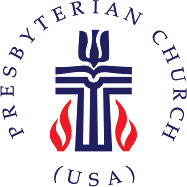Acts 4:32-35
- When I read this passage, I see a very short but clear account of some of the actions of the early church. How do our churches today measure up?
- Another very short passage. Modern readers probably would see a disconnect between "good and pleasant" and "oil... running down (one's) beard," so it would probably be worth some time to unpack this imagery.
- There is a lot of symbolic imagery of "light" and "darkness" in this introduction. Do readers today understand this imagery in the same way that John would have understood it? What differences might there be?
- John writes a lot about sin very early in this letter, but doesn't really get into specific "sins." Modern Christians seem fairly adept at understanding such generic language as refer to "other people's sins" more than to their own. Would John's audience have had similar tendencies? If so, why be so generic? If not, why were they different, and how might we change the way we so easily shift the attention away from our own sins?
- Picking up right where the resurrection story (as told in John, anyway) left off last week, we don't see any of the "identity confusion" that marked Jesus' appearance to Mary in the previous verses, but we are told that Jesus appeared to his disciples despite the doors being locked. John makes a point of providing this detail. We also see that Jesus shows them his wounds (a wholly separate occasion of this from doing so to assuage Thomas' doubts in the verses that follow). Why does Jesus do this? Is Jesus assuaging doubts on the parts of the other disciples? Is he demonstrating that he is the same person, because they otherwise would have some of the same difficulties Mary had? Is he showing that, although he is the same person, his body is no longer the same as it was before, exemplified by his appearance despite the locked doors and/or his ability to live with such wounds?
- Why does Jesus talk about the forgiveness of sins in this context? What brought it up?
- Thomas often gets a lot of criticism for his doubts, but it's worth keeping in mind that Jesus was dead, and that people aren't known for coming back from death. I'm reminded of a sermon I heard while volunteering at the Montreat Youth Conferences this past year. The preacher there suggested that Thomas' statement, "I will not believe," could be faithfully interpreted not so much as a stubborn refusal, but more along the lines of "I can not believe" (however much he may want to, the difficulty is just too great). For those of you who know Greek better than I do, is this a faithful way of reading the passage?
- The last few verses of this passage read like a conclusion, but the Gospel of John actually isn't done yet. Why do you think John is constructed in this way?








No comments:
Post a Comment